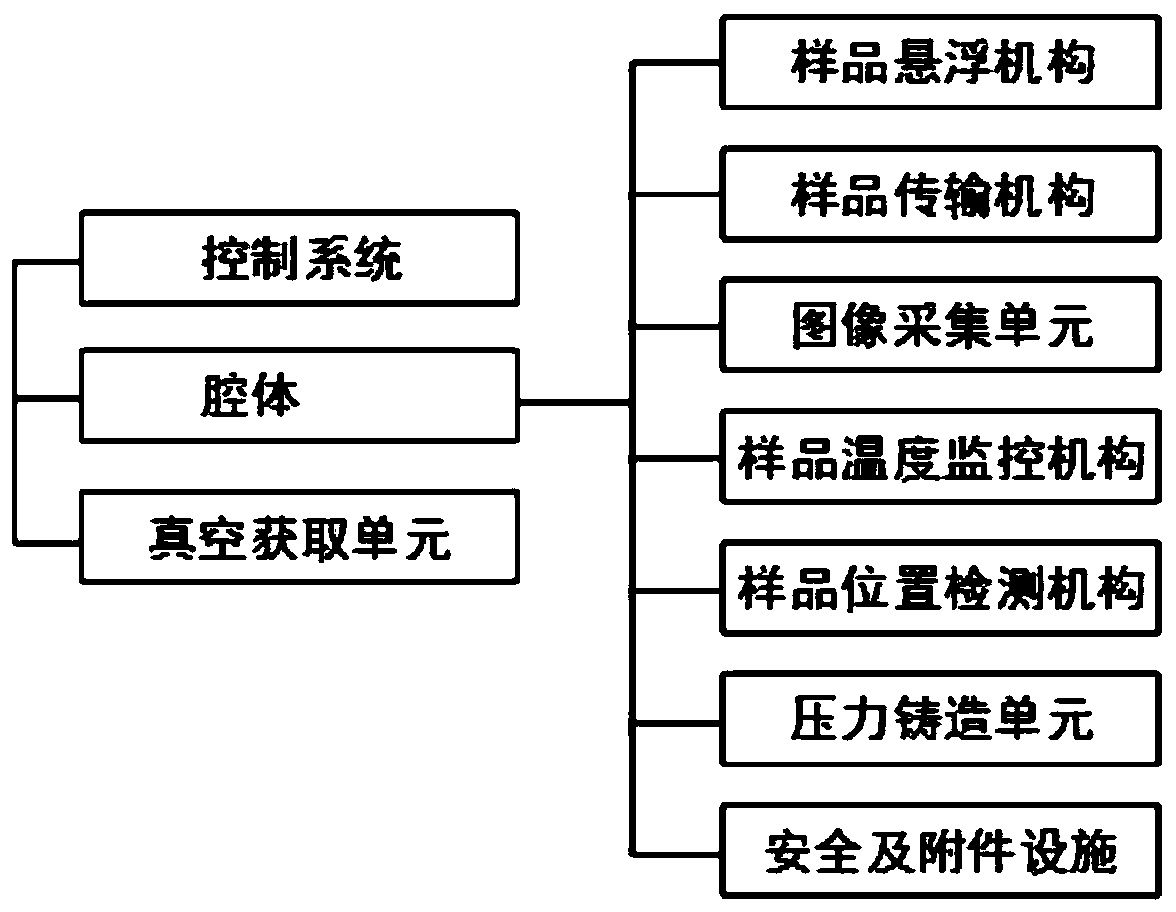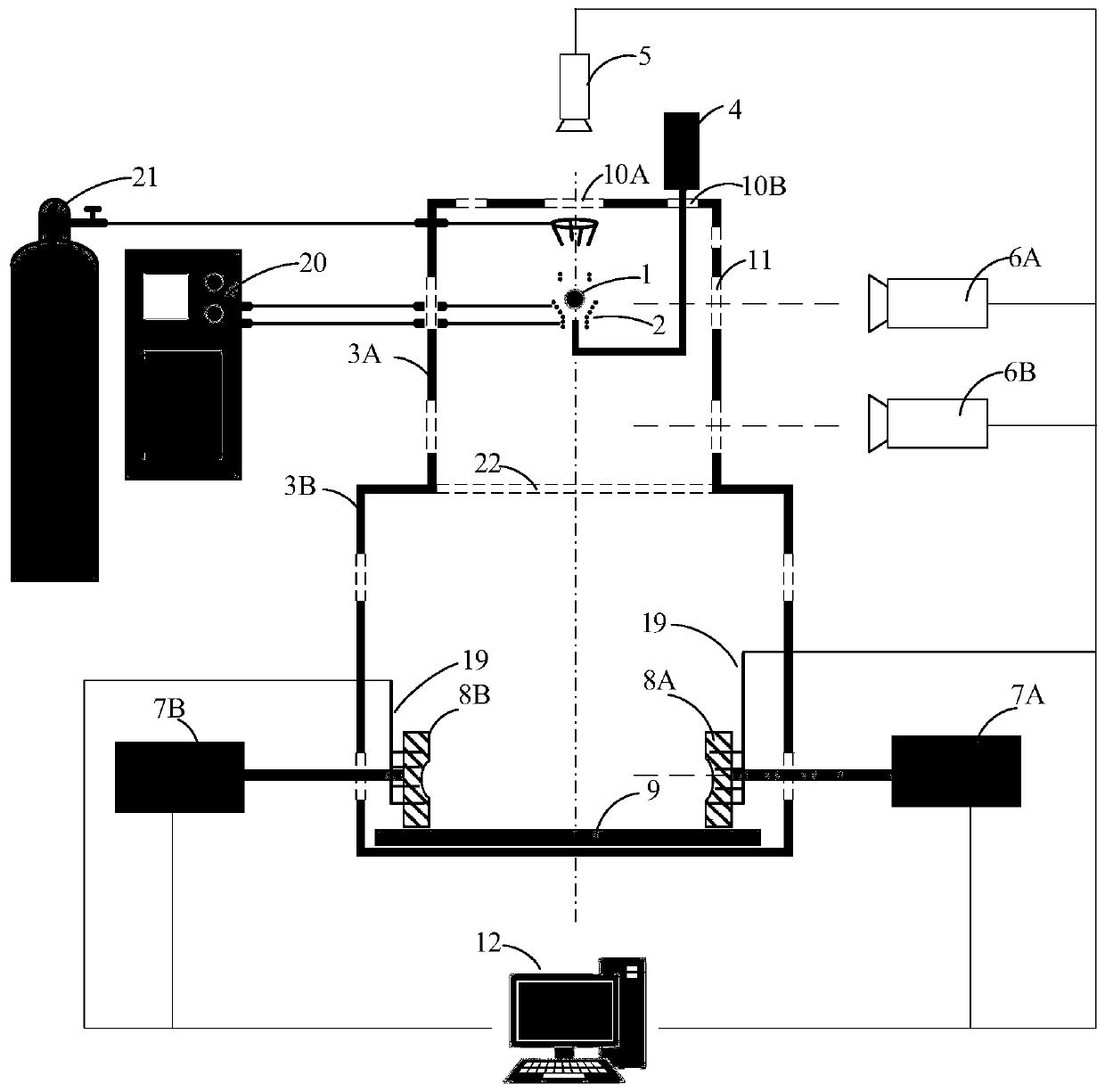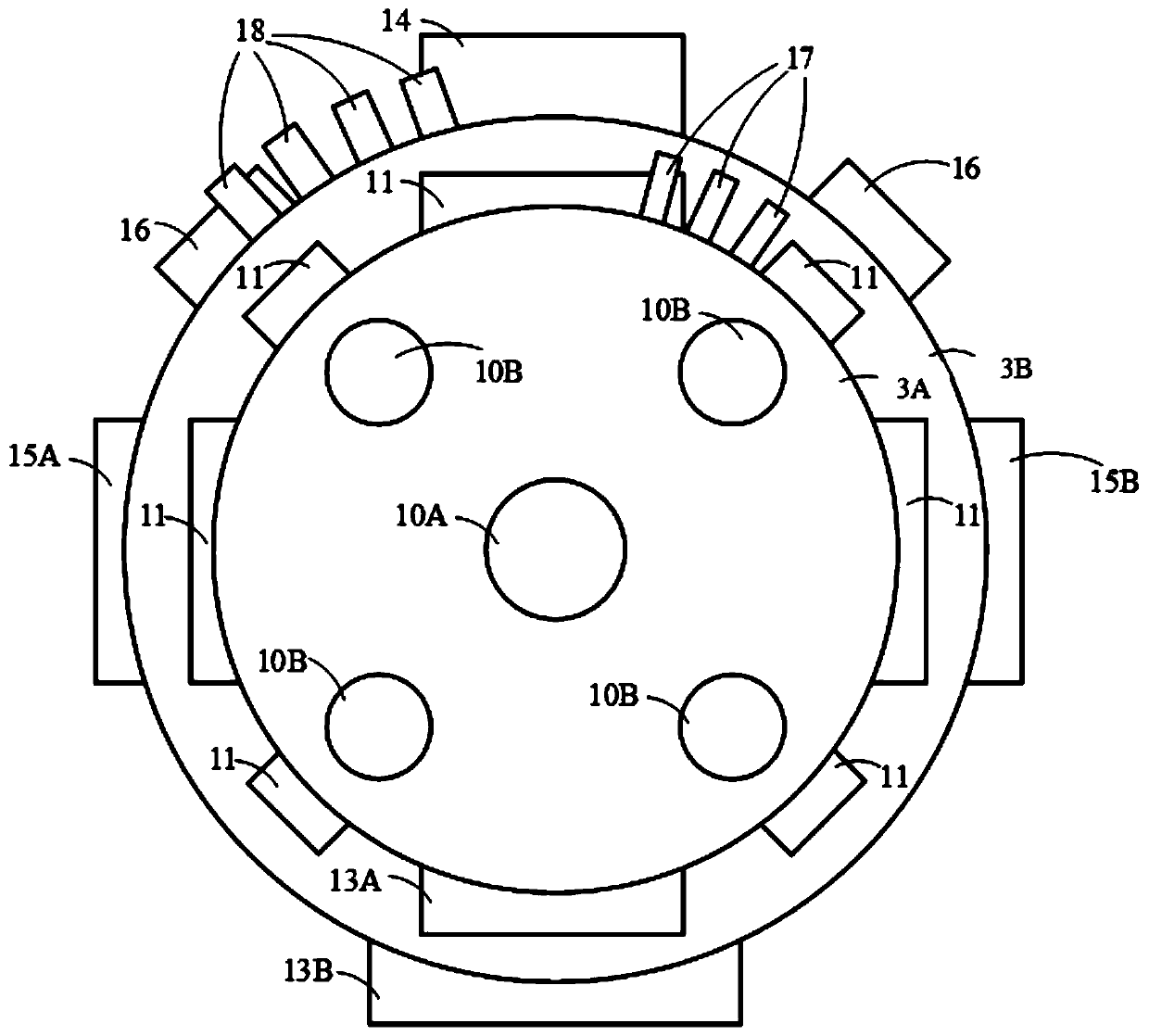System and method for preparation of ultrahigh vacuum electromagnetic suspension material
An electromagnetic levitation and ultra-high vacuum technology, applied in the field of material processing, can solve the problems of no heating, temperature control and solidification, and no comprehensive electromagnetic levitation solutions for large-sized metals, achieving excellent mechanical properties and short processing cycles. , the effect of less loss of raw materials
- Summary
- Abstract
- Description
- Claims
- Application Information
AI Technical Summary
Problems solved by technology
Method used
Image
Examples
Embodiment Construction
[0031] The following will clearly and completely describe the technical solutions in the embodiments of the present invention with reference to the accompanying drawings in the embodiments of the present invention. Obviously, the described embodiments are only some, not all, embodiments of the present invention. Based on the embodiments of the present invention, all other embodiments obtained by persons of ordinary skill in the art without making creative efforts belong to the protection scope of the present invention.
[0032] see Figure 1~3 , the embodiment of the present invention provides an ultra-high vacuum electromagnetic suspension material preparation system, the system specifically includes: a cavity, a vacuum acquisition unit and a control system; facilities related to the cavity include: a sample suspension mechanism, a sample transmission mechanism, an image acquisition Unit, sample temperature monitoring mechanism, sample position detection mechanism, die castin...
PUM
 Login to View More
Login to View More Abstract
Description
Claims
Application Information
 Login to View More
Login to View More - R&D
- Intellectual Property
- Life Sciences
- Materials
- Tech Scout
- Unparalleled Data Quality
- Higher Quality Content
- 60% Fewer Hallucinations
Browse by: Latest US Patents, China's latest patents, Technical Efficacy Thesaurus, Application Domain, Technology Topic, Popular Technical Reports.
© 2025 PatSnap. All rights reserved.Legal|Privacy policy|Modern Slavery Act Transparency Statement|Sitemap|About US| Contact US: help@patsnap.com



